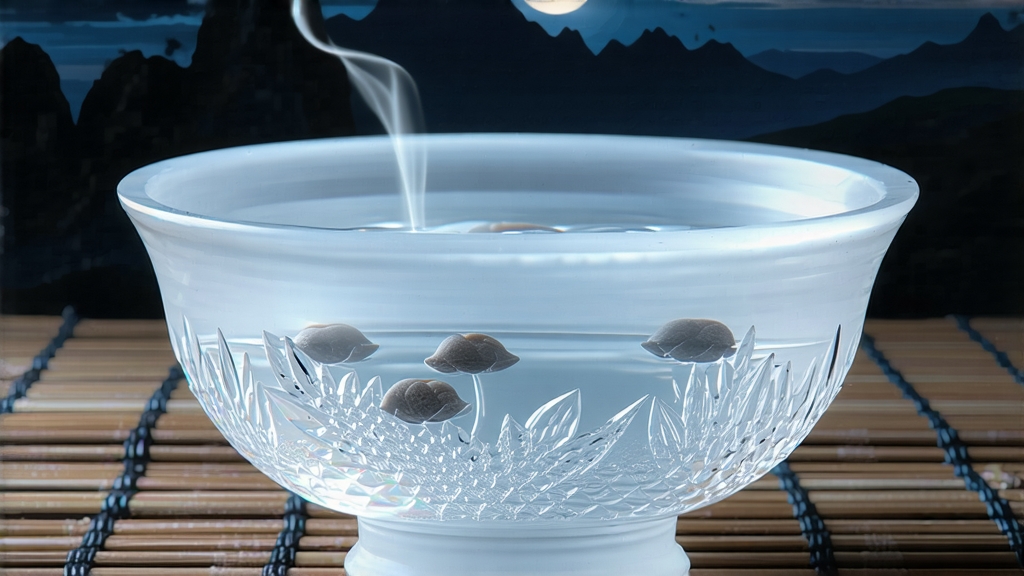
White tea is the least disturbed child in the Chinese tea family: leaves are allowed to stay closest to their living form, undergoing almost no rolling or roasting. Among its three traditional grades—Silver Needle, White Peony, and Shou Mei—Bai Hao Yin Zhen, literally “White-Hair Silver Needle,” sits at the pinnacle. Only the unopened, single bud is plucked, and only for a few spring mornings. To international drinkers who meet it for the first time, Silver Needle looks more like a cache of tiny ivory darts than an agricultural product; once infused, it reveals why Song-dynasty poets praised white tea as “the elegance of a hermit who refuses to be sullied by the world.”
Historical whispers
The earliest verifiable record appears in the Song Huiyao, an imperial archive of 1068 CE, where “white buds” from the northern Min coast were listed among tribute teas. Yet those Song cakes were steamed, pressed, and stamped, very different from today’s loose buds. The modern craft of withering and drying only buds was codified in the 1790s around Taimu Mountain, Fujian, when improved road access let Fuding merchants send their silvery cargo down to Guangzhou export houses. By 1891, Silver Needle won a gold medal at the Calcutta International Exhibition, and English porcelain makers designed special “needle spout” teapots to accommodate its length. After the 1911 Revolution, warlords taxed tea caravans so heavily that many gardens were abandoned; Silver Needle vanished from European catalogues until the 1970s, when state farms revived the grade for foreign-currency earnings. Today, small family plots have once again become the norm, and the tea travels not in lead-lined chests but in vacuum-sealed pouches tucked into carry-on luggage.
Terroir: two counties, two personalities
Authentic Silver Needle comes only from Fujian’s coastal strip: Fuding in the north and Zhenghe in the interior. Fuding sits on a red-granite plateau laced with sandy loam; warm sea breezes meet cold Taimu Mountain air, creating nightly fogs that slow transpiration. The resulting buds are plump, silvery, and famous for a “milk and orchid” aroma. Zhenghe lies 300 m higher, on purple soil richer in iron; cooler nights lengthen withering, giving a sturdier bud with greener tints and a deeper, quince-like sweetness. Purists treat the two origins like Burgundy’s Côte de Nuits vs. Côte de Beaune: same cultivar, different dialogues with sky and soil.
Cultivar: the father and the mother
Although any Camellia sinensis bud can theoretically be turned into white tea, two clonal bushes have proved supreme. Fuding Da Bai (“Big White”) develops a 35 % higher amino-acid load than the average China bush, yielding the down that catches light like frost. Zhenghe Da Hao (“Big Down”) carries even longer pubescence, but its thicker cell wall demands longer withering; in the wrong hands it can taste grassy, in the right ones it becomes honeydew. Attempts to plant Da Bai in Yunnan or Assam produce larger crops but lose the marine minerality; thus, like Champagne, Silver Neede remains geographically stubborn.
Plucking ritual
The rules are almost monastic: buds must be taken when they reach 2.5–3 cm but before the first leaf unfurls, usually during the two weeks after Qingming (early April). Pickers pinch with thumb and middle finger, never the index, to avoid bruising the tender base. A skilled woman can gather 600 g of fresh buds per hour; 25 000 of them will shrink to just 500 g of finished tea. Rainy buds are rejected because surface moisture can trap oxygen and trigger blackening; instead, pickers wait until the mountain mist lifts and the dew point drops.
Withering: the art of doing nothing
Once back at the shed, buds are spread on reed mats 1.5 cm thick. For the next 36–48 hours they lie in mountain shade while enzymatic alchemy proceeds: proteins break into free amino acids, catechins oxidise just enough to soften astringency, and grassy hexenals volatilise into floral linalool. The key is to ride the diurnal wave: daytime